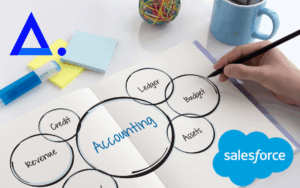Why data migrations can make — or break — your practice
Moving data from legacy systems, spreadsheets, or old file servers into a modern CRM sounds straightforward — but done poorly, it can cripple your practice for years.
A poorly planned migration is one of the most common root causes we see behind:
-
Lost signed engagement letters.
-
Missing KYC files or trust deeds.
-
Duplicates that confuse compliance teams and break audit trails.
A recent Chartered Accountants ANZ study found nearly 1 in 3 mid-tier firms that moved to new systems ended up with major compliance gaps.
But it’s not just about the technology. According to a global report by FSN, despite all the effort spent on automations and custom software, a staggering 69% of firms said the main challenge to data accuracy and consistency was human error.
Whether it’s inconsistent ABNs, staff forgetting to upload compliance documents, or naming trust entities differently, these small human errors quickly pile up — and once migrated, they’re embedded in your new system. That’s why Argo Logic gets involved early, applying industry best practices to normalise your data, streamline internal processes, and set up clear guardrails for your team.
We configure locked cells, required fields, smart pop-ups to catch mistakes in real time, and gentle reminders that guide staff to do things right the first time. Then, after implementation, we continue to work alongside you — building dashboards that highlight where bottlenecks occur, so you can refine your procedures and adapt as needed.
We don’t believe in “big bang” rollouts that drop a system on your team and walk away. Instead, we take a staged approach, partnering with you to adjust and improve over time, making sure your new system evolves with your practice.
Data Migration Tips and Tricks for a Smooth Transition
At Argo Logic, we understand data migration is often the most daunting part of implementing a new system. But with the right preparation, your CRM or practice management platform will run seamlessly from day one. Here are some of our top tips.
1. Understand your previous provider’s data model (and how it lines up with other systems)
Before migrating, ask your current CRM or practice system for their data structure documentation and export schema.
-
Request separate sheets for each object type — accounts, contacts, entities, trusts, tasks.
-
Ensure CSV exports preserve data integrity, so critical fields (like phone numbers with leading zeroes) aren’t mangled by being treated as numbers instead of text.
But it doesn’t stop there.
You’ll also need to match this data model against any other systems you plan to integrate — like your CRM, ERP (Xero), Class, BGL, or document management tools (Sharepoint). You can also link these to marketing communications systems lik BOMA and Mailchimp.
For example, different platforms often handle directors or shareholders differently. One might treat them as contacts tied to an entity, while another has them as standalone records with different permissions. This matters enormously when you introduce e-signature tools (like DocuSign or Formstack) or client portals.
You’ll want to ensure:
-
The right directors or shareholders are linked properly, so documents go to the correct signatory.
-
Only authorised people have permission to view or sign compliance packs inside the system.
✅ At Argo Logic, we map this across your entire ecosystem, so your CRM, Xero, Class or BGL are aligned, reducing future integration headaches and security risks.
2. Address common data mistakes upfront
Cleaning data is where most migrations fail. We frequently see:
-
Duplications in names or slightly mismatched ABNs that fragment your compliance history. Do you have “John Smith” in Xero but “John Charles Smith” in BGL? And then “Jack Smith” in BOMA. The only common thread between all would be either a mobile or email.
-
Inconsistent spelling of addresses and states (e.g. NSW vs New South Wales vs NWS).
-
Emails stored with unnecessary prefixes or half-missing domains (like “mailto:” or outdated staff emails).
-
Mismatched picklist values — e.g. “SMSF Setup”, “SMSF Set-up”, “SMSF Establishment” all floating around separately.
-
Phone numbers in every possible format (+61, local, spaces scattered inconsistently).
-
Duplicate fund or trust names with no clear unique identifier, so you can’t be certain who’s linked to what.
3. Handle messy exports with a strategy
Some old systems export wide rows — one CSV with columns like “Contact 1”, “Contact 2”, “Contact 3” all jammed into a single line.
✅ Instead, we restructure:
-
One row per contact or entity, keeping relationships properly linked in the CRM.
-
Split phone types into dedicated fields (“Mobile”, “Office”, “Home”) to simplify reporting and filtering later.
4. Don’t forget your activity history
Old systems often log emails or calls in unstructured notes fields. We ensure:
-
Linked email files or engagement histories are properly tied to the right contact or client entity.
-
Calls, tasks, and follow-ups remain visible for your compliance and review process.
5. Always validate after migration
Never trust that “no error report” means your data imported perfectly.
We run:
-
Sample cross-checks comparing old and new key data sets.
-
Simulated workflows (like generating trust compliance reports) to see if everything links up.
-
Audit-style reviews on subsets to spot any hidden gaps.
6. Maintain data hygiene long after the move
The biggest threat is still human error. That’s why we go beyond initial migration:
✅ We build clear staff guardrails with locked fields, required inputs, pop-ups and gentle reminders.
✅ We create dashboards so you can see immediately where your data or workflow is breaking down.
✅ We stay on to help refine procedures — so your data doesn’t just start clean, it stays clean.
Why accounting practices trust Argo Logic
We’ve migrated thousands of clients for Australian accounting firms, protecting their compliance trails, linking everything into Xero & Class, and building dashboards that proactively catch mistakes before they become risks.
We understand your reality — audits, ASIC compliance, annual engagement renewals — and we tailor your CRM exactly for that, with local expertise.
Call to Action:
📊 Ready to assess your firm’s data for AI readiness?
👉 Book a free consultation We’ll show you exactly where your biggest risks and slowdowns are — and how a connected tech stack can fix them.




